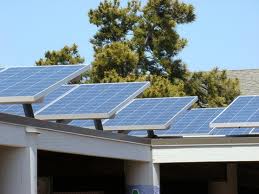Green Energy Trading
The STP represents the proportion of an electricity supplier’s sales that it needs to surrender each year as Small-scale Technology Certificates (STCs) to meet its obligations under the Renewable Energy Target. (For more information go to http://ret.cleanenergyregulator.gov.au/Latest-Updates/2014/The-2014-small-scale-technology-percentage-and-renewable-power-percentage-set .)
The STP of 10.48 per cent equates to an annual STC Target of 18.657 million certificates. This implies that the expected level of liable electricity sales for 2014 is approximately 178,000 Giga Watt hours (GWh). This is similar to the level of liable electricity sales in 2013.
The STC Target of 18.657 million comprises the carry-forward of 1.90 million STCs that were surplus from previous years together with an estimated 16.575 million STCs that are expected to be registered in 2014. (For a more detailed assessment of how the 1.90 million surplus was calculated refer to http://greenenergytrading.com.au/news-events/stc-market-ends-2013-on-track.)
The real target for STC registrations in 2014 is 16.575 million STCs which is equivalent to 319,000 STCs created each week. Interestingly, the average weekly STCs created so far in 2014 is very similar to this level at 327,000.
Predicted 18 per cent drop in solar PV installation
If we allow for approximately 1.9 million STCs for solar hot water then the target for solar PV is 14.675 million. This is equivalent to 710 MW of solar PV installations which is 18 per cent lower than the 870 MW that was estimated to have been installed in 2013.
The Clean Energy Regulator has also released the non-binding STP targets for 2015 and 2016 of 10.1 per cent and 10.32 per cent respectively. Assuming the same level of liable electricity sales as used in 2014 of 178,000 GWh, then the non-binding STC targets for 2015 and 2016 are 17.98 million and 18.37 million respectively.
For more information on how the STP target was set and assumptions used refer to http://ret.cleanenergyregulator.gov.au/About-the-Schemes/About-the-small-scale-technology-percentage/The-current-STP/STP-modelling-reports/STP-modelling-reports
Market response
It appears that at first glimpse that the STC target was less than the market expected. STCs had traded earlier in the day on Friday 14 March at up to $39.00 and traded as low as $38.30 after the announcement before closing the day at $38.70.
With the announcement of the STP, liable parties now know what they need to surrender for the first compliance period by 28 April 2014. The first quarter target is 35 per cent of the annual target which means that approximately 6.5 million STCs need to be surrendered by 28 April. At close of business on Friday 14 March 2014 only 6.04 million STCs were available in the market and of these 0.94 million were sitting in the Clearing House.
There is still another five weeks or so to have certificates registered in time for compliance so Green Energy Trading expects the level of available certificates to increase. The supply of certificates in the lead up to surrender may get tight and it will be interesting to see whether any certificates get settled through the Clearing House.








